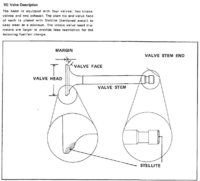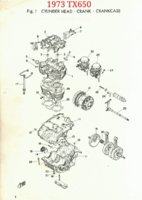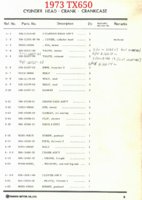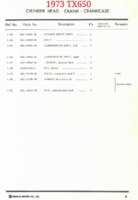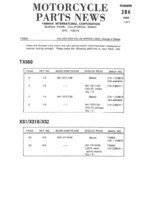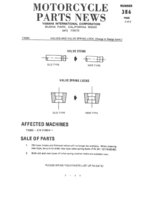Orion61
XS650 Addict
Anybody here old enough to remember The oil embargos of the 70's and the smell of that funny smelling
new Unleaded Gas? We know the Lead in the fuel was used as a lubricant. What year did Yamaha start using hardened steel in valves and seats and switch the 650 to use unleaded fuel? I just thought of this today as I was clearing up work space so I can get my 1975 650 back up and running when I ran into a half full bottle of lead substitute. I was thinking I had either bought it when I got the bike to use or for my old MGB?
My memory has faltered a bit since I was hurt at work badly, I ended up having 8 total Surgeries, Massive MERSA Staff infection, and several resulting heart attacks, One of which caused by a Pulmonary Embolism.
and which had me "crash" for close to 5 minutes, When they finally brought me back,(on their last attempt), some pages out of the old file cabinet upstairs got shuffled up a bit and lost.
I haven't seen this subject come up, and if the early XS 650's were designed to use the lead in the fuel,
are they being hurt? I just can't remember if mine needs it, I know a lot of Auto's in 1975 used unleaded
and it seems some 1974's as well. I will try to take some video, or images as I go along.
Thanks much,
Cousin Larry
Enjoy every day for the Blessing it is.
new Unleaded Gas? We know the Lead in the fuel was used as a lubricant. What year did Yamaha start using hardened steel in valves and seats and switch the 650 to use unleaded fuel? I just thought of this today as I was clearing up work space so I can get my 1975 650 back up and running when I ran into a half full bottle of lead substitute. I was thinking I had either bought it when I got the bike to use or for my old MGB?
My memory has faltered a bit since I was hurt at work badly, I ended up having 8 total Surgeries, Massive MERSA Staff infection, and several resulting heart attacks, One of which caused by a Pulmonary Embolism.
and which had me "crash" for close to 5 minutes, When they finally brought me back,(on their last attempt), some pages out of the old file cabinet upstairs got shuffled up a bit and lost.
I haven't seen this subject come up, and if the early XS 650's were designed to use the lead in the fuel,
are they being hurt? I just can't remember if mine needs it, I know a lot of Auto's in 1975 used unleaded
and it seems some 1974's as well. I will try to take some video, or images as I go along.
Thanks much,
Cousin Larry
Enjoy every day for the Blessing it is.

